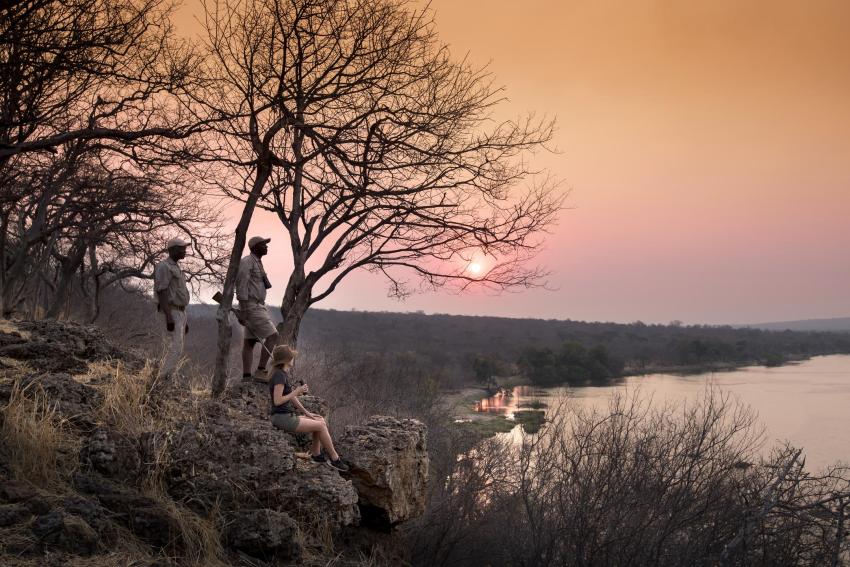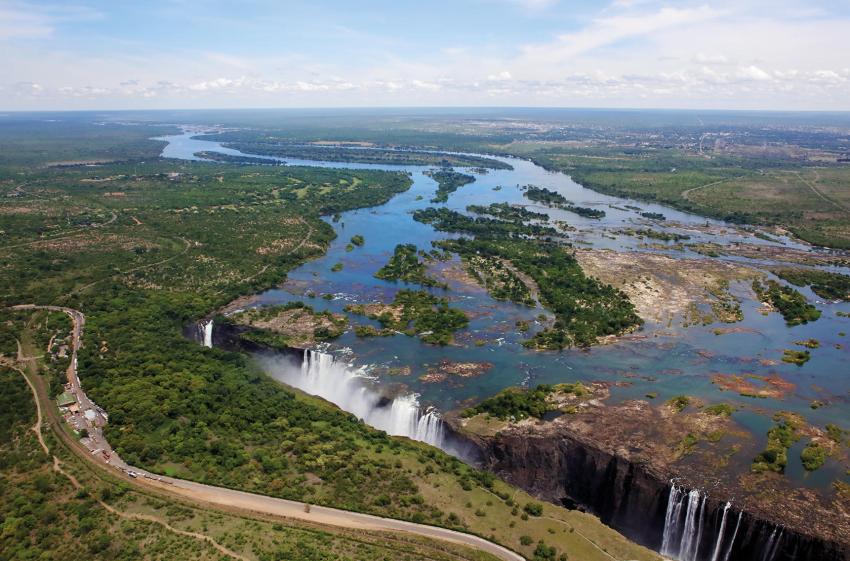Tumbling spectacularly along the Zambezi River, Victoria Falls (also known as “Mosi-oa-Tunya”) is a UNESCO World Heritage-listed waterfall that has been designated as one of the 7 Natural Wonders of the World. It straddles the border between Zimbabwe and Zambia, with a total width of just over 1,700 metres, making it the largest sheet of falling water on the globe.
Visiting Victoria Falls is a “must” for many travellers to Africa, with this natural attraction offering a whole host of adventure activities and outdoor pursuits in its surroundings. But deciding which country to view it from can be tricky, with both sides having their appeal.
In this article, discover the pros and cons of visiting Victoria Falls from Zimbabwe vs Zambia and the practical considerations to keep in mind.
For the best views
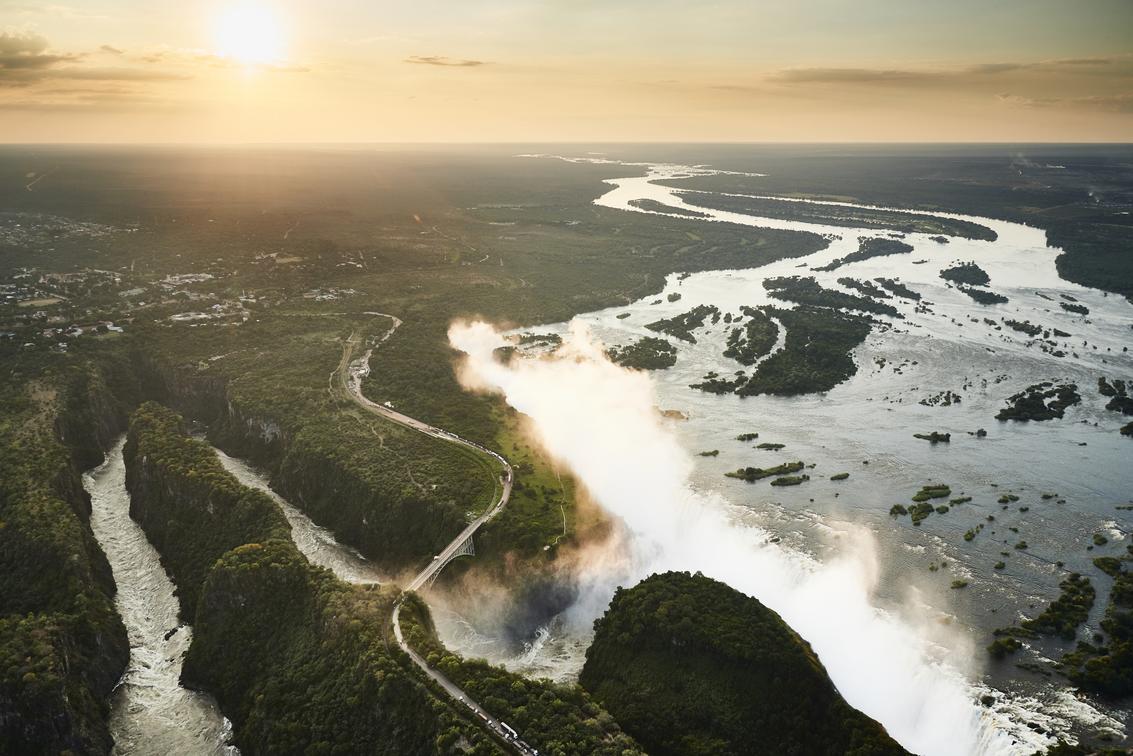
 While Zimbabwe is home to around two-thirds of the falls, both countries offer majestic and unique views of the “Smoke That Thunders”. On the Zimbabwean side, you enter through Victoria Falls National Park, which is home to the Devil’s Cataract, Horseshoe Falls and Rainbow Falls. It encompasses a network of walkways that lead to jaw-dropping viewpoints, some of which offer that “classic” view. Current entry costs are 50 USD for most international tourists.
While Zimbabwe is home to around two-thirds of the falls, both countries offer majestic and unique views of the “Smoke That Thunders”. On the Zimbabwean side, you enter through Victoria Falls National Park, which is home to the Devil’s Cataract, Horseshoe Falls and Rainbow Falls. It encompasses a network of walkways that lead to jaw-dropping viewpoints, some of which offer that “classic” view. Current entry costs are 50 USD for most international tourists.
If you’re visiting from the Zambian side, you’ll enter through Mosi-oa-Tunya National Park, which is more affordable at 20 USD for international visitors. It offers a more untamed experience but gets you right up close to the gushing waters. Highlights of the Zambian side include crossing the Knife’s Edge Bridge to view the Eastern Cataract and descending deep into the gorge along the Boiling Pot Trail. It’s also here that you’ll find Livingstone Island and the Devil’s Pool for a unique perspective on Victoria Falls.
In summary, the Zimbabwean side offers longer trails, more viewpoints and a more expansive view of the falls while Zambia offers unforgettable, up-close experiences. If you’re on a tight budget, then visiting from the Zambia side is the clear choice at less than half the cost of viewing from the Zimbabwe side.
Livingstone, Zambia vs Victoria Falls, Zimbabwe
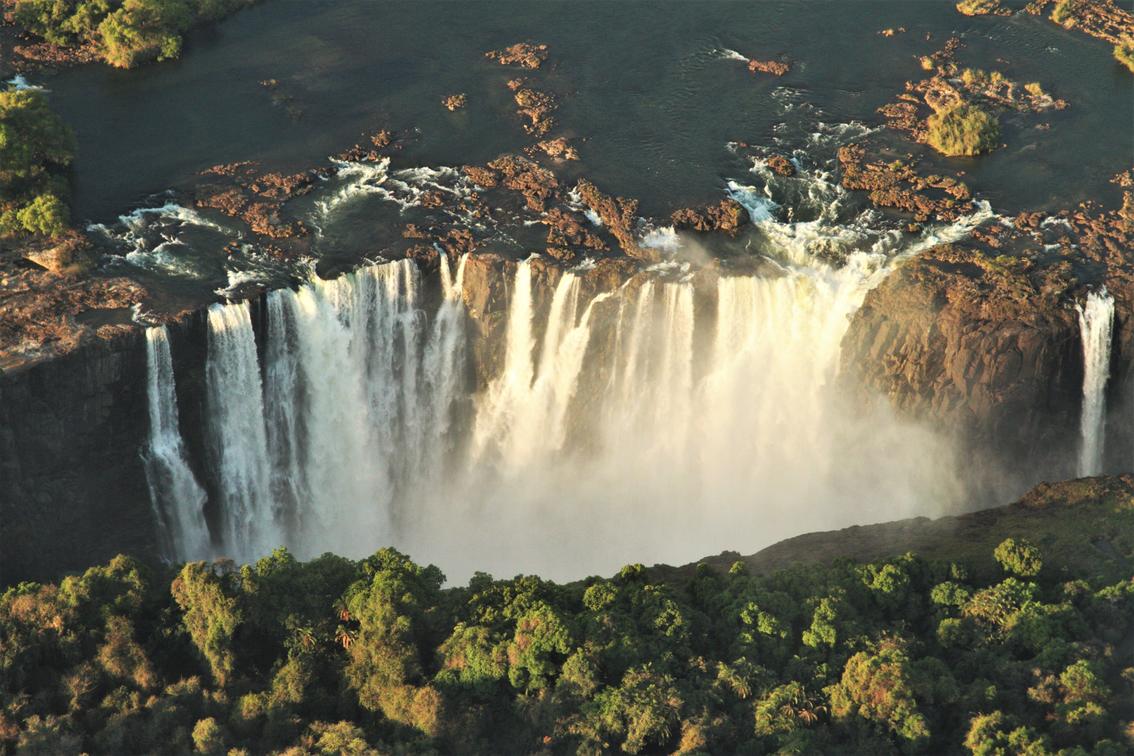
 Also worth factoring into your decision is the town you prefer to stay in, with Livingstone being the gateway to the Zambian side and Victoria Falls Town to the Zimbabwean side. Due to instability in the past, Livingstone has been preferred by many travellers, although both towns cater well to tourists.
Also worth factoring into your decision is the town you prefer to stay in, with Livingstone being the gateway to the Zambian side and Victoria Falls Town to the Zimbabwean side. Due to instability in the past, Livingstone has been preferred by many travellers, although both towns cater well to tourists.
Victoria Falls Town has an edge due to its close proximity to Mosi-oa-Tunya, which is less than one kilometre away. It’s possible to walk through the forest from many of the town’s lodges and hotels, with no need to pay for additional transport. In the town itself, you’ll find some great cafes and independent stores, as well as the Elephant Walk Shopping & Artist’s Village. It’s packed with workshops and studios where you can see jewellery and handicrafts being made, as well as encompassing an organic herb garden.
In contrast, Livingstone is around 10 kilometres away from Victoria Falls, so you need to organise transport to access Mosi-oa-Tunya National Park. That being said, it is less touristy than Victoria Falls Town and has a more authentic feel, with a larger and more lively permanent population. There are some wonderful riverside lodges upstream from the falls, as well as a good choice of backpackers and campgrounds for those travelling on a budget.
Activities
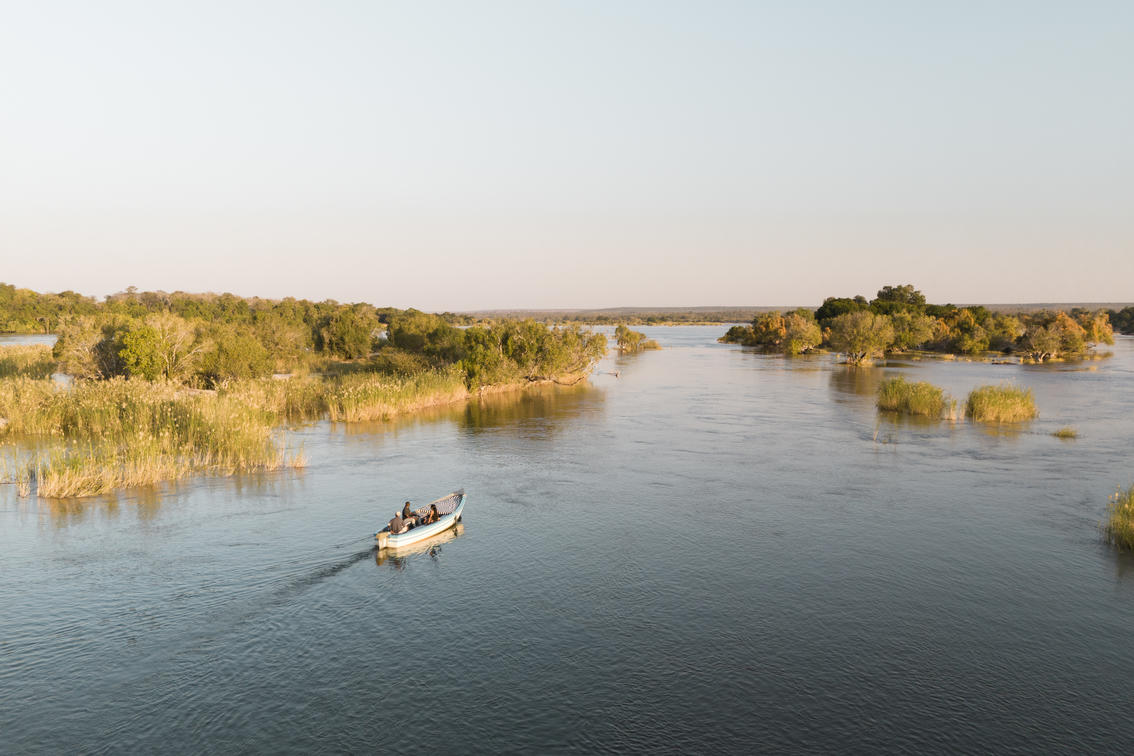
 While visiting the falls and snapping a few pics is all part of the experience, there is so much more to discover in the area. Victoria Falls has been dubbed the “Adventure capital of Africa”, with everything from zip-lining to bungee jumping and white-water rafting on offer. You can take a microlight or helicopter flight to get a bird’s eye view of the cascades or embark on a sunset river cruise to see the Zambezi River in the most atmospheric light.
While visiting the falls and snapping a few pics is all part of the experience, there is so much more to discover in the area. Victoria Falls has been dubbed the “Adventure capital of Africa”, with everything from zip-lining to bungee jumping and white-water rafting on offer. You can take a microlight or helicopter flight to get a bird’s eye view of the cascades or embark on a sunset river cruise to see the Zambezi River in the most atmospheric light.
While all of the above activities can be enjoyed from either side, Zambia has one of the falls’ most sought-after experiences - a trip to Livingstone Island and Devil’s Pool. After a short boat ride to the island, you’ll take a dip in the notoriously named pool, which lies right on the edge of Victoria Falls. For some, it’s a bucket list experience. For others, just the idea of it is sheer terror!
One of the advantages of doing several different activities is the opportunity to see Victoria Falls from multiple angles and access both the Zimbabwean and Zambian sides. But if you do plan on doing border crossings, it’s best to plan ahead and secure a KAZA Univisa in advance (see more below).
Safari experiences
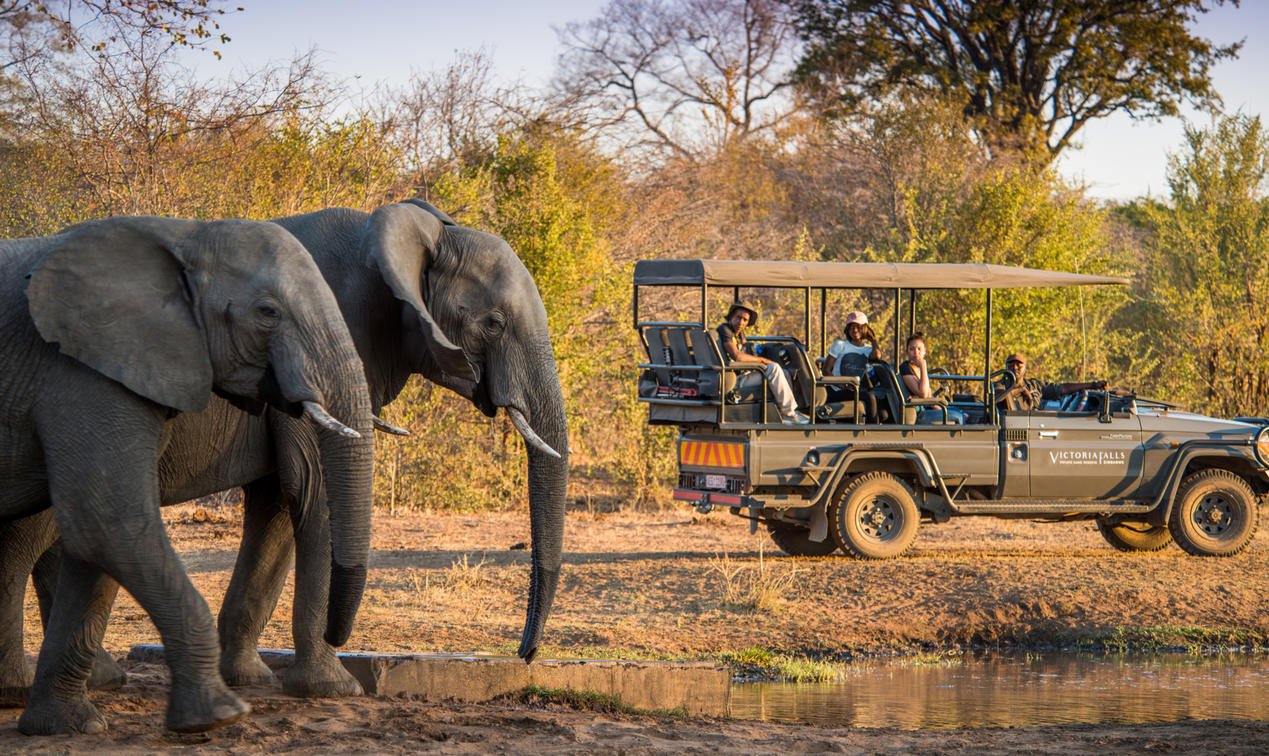
 Most people combine their trip to Victoria Falls with an African safari, either in Zimbabwe, Zambia or further afield. Both Victoria Falls National Park and Mosi-oa-Tunya National Park attract a variety of wildlife, with zebras and giraffes sometimes seen grazing on the lawns of riverside lodges. White rhinos have been reintroduced to Mosi-oa-Tunya from South Africa and the surrounding forests support a huge diversity of birdlife.
Most people combine their trip to Victoria Falls with an African safari, either in Zimbabwe, Zambia or further afield. Both Victoria Falls National Park and Mosi-oa-Tunya National Park attract a variety of wildlife, with zebras and giraffes sometimes seen grazing on the lawns of riverside lodges. White rhinos have been reintroduced to Mosi-oa-Tunya from South Africa and the surrounding forests support a huge diversity of birdlife.
Sprawling to the west of Victoria Falls Town (on the Zimbabwe side) is Zambezi National Park, which is home to all of the “Big Five” (except rhinos). Its mopane woodland and forests provide a habitat for elephants, hippos and crocodiles, all of which can be spotted on river safaris and canoe trips.
For a more classic safari experience, head south to Hwange National Park, which is around an hour’s drive from Victoria Falls. It’s the oldest and largest game park in the country and home to more than 40,000 elephants. Here you can spot the “Big Five” and elusive leopards, as well as large herds of giraffes.
If you want to stay in Zambia, then head to the country’s oldest and largest national park, Kafue, which is named after the river that flows through its heart. It encompasses bird-filled swamps and grassy plains that attract elephants, antelopes and hippos. Further afield is South Luangwa with its wildlife-filled woodland savannah and beautiful baobab trees, which are best explored on walking safaris.
Less than 100 kilometres from Victoria Falls is Chobe National Park, which is located across the border in northern Botswana. It’s home to one of the world’s largest populations of elephants and is a great place to tick the “Big Five” off your list. It can easily be combined with an exploration of the Okavango Delta whose seasonal floodplains are best explored by mokoro canoe.
Best time of the year to visit
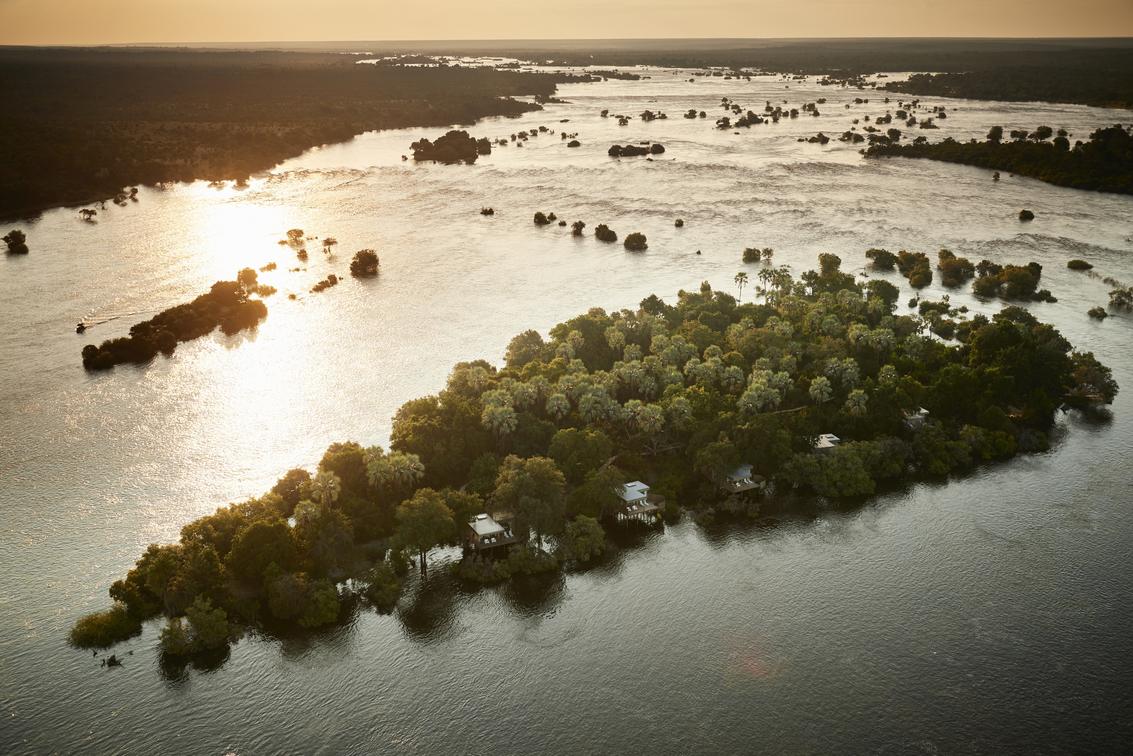
 Generally speaking, the best time to visit Victoria Falls is between February and June when the water levels are high and the spray from the cascades is at its most impressive. Helicopter rides are particularly spectacular from late December to early March when the falls are at their fullest. That being said, capturing photos amidst these misty conditions can be challenging and some people prefer to travel later in the season when the visibility is improved.
Generally speaking, the best time to visit Victoria Falls is between February and June when the water levels are high and the spray from the cascades is at its most impressive. Helicopter rides are particularly spectacular from late December to early March when the falls are at their fullest. That being said, capturing photos amidst these misty conditions can be challenging and some people prefer to travel later in the season when the visibility is improved.
If you want to go white water rafting or take a dip in the Devil’s Pool, then you’ll need to wait until the water levels are lower and safer (July to January). October and November are usually the driest months and it’s not uncommon for the falls on the Zambian side to completely dry up. If you are planning on travelling at this time of the year, then head to the Zimbabwe side.
The busiest time at Victoria Falls coincides with the peak safari season, which extends from July to October. The dry conditions are ideal for wildlife viewing, with reduced vegetation making the animals easier to spot and large concentrations of species congregating around permanent water sources.
Discover both sides
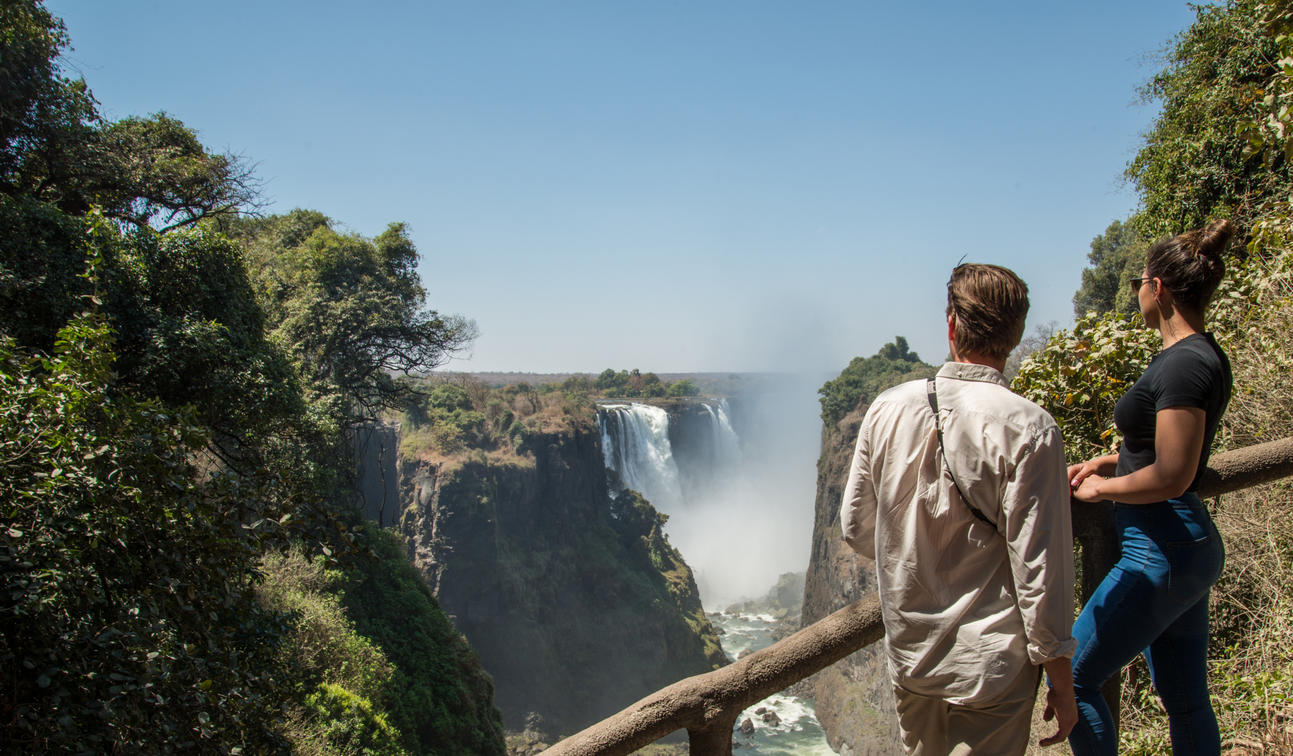
 For the best of both worlds and to enjoy all the experiences that Victoria Falls has to offer, we recommend viewing this UNESCO World Heritage-listed natural wonder from both Zimbabwe and Zambia. To make this easier and more affordable, you can apply for a KAZA Univisa, which allows you unlimited entries into both countries for up to 30 days. It also allows you to enter Botswana for a day trip if you want to visit Chobe National Park.
For the best of both worlds and to enjoy all the experiences that Victoria Falls has to offer, we recommend viewing this UNESCO World Heritage-listed natural wonder from both Zimbabwe and Zambia. To make this easier and more affordable, you can apply for a KAZA Univisa, which allows you unlimited entries into both countries for up to 30 days. It also allows you to enter Botswana for a day trip if you want to visit Chobe National Park.
At the time of writing, the KAZA Univisa was 50 USD and could be applied for at your port of entry, such as Harare International Airport, Kenneth Kaunda International Airport, Victoria Falls International Airport or a land border crossing. You can also apply online via the Zambia e-visa and Zimbabwe e-visa websites, keeping in mind that you should apply with the first country you intend on visiting.
Remember, visa regulations do change, so check online with the relevant e-visa sites prior to your departure or chat with your Africa safari travel expert for the most up-to-date information.

 1-321-766-6821
1-321-766-6821 
